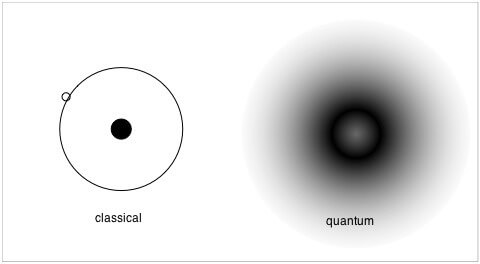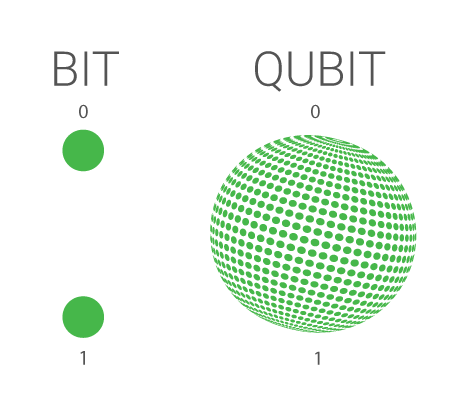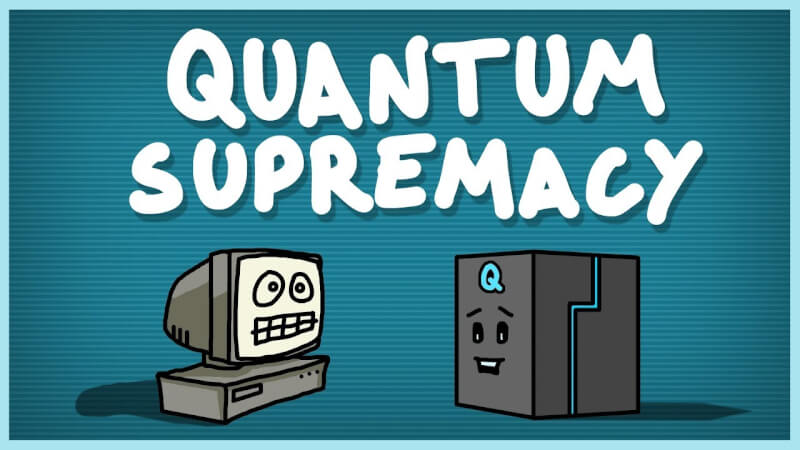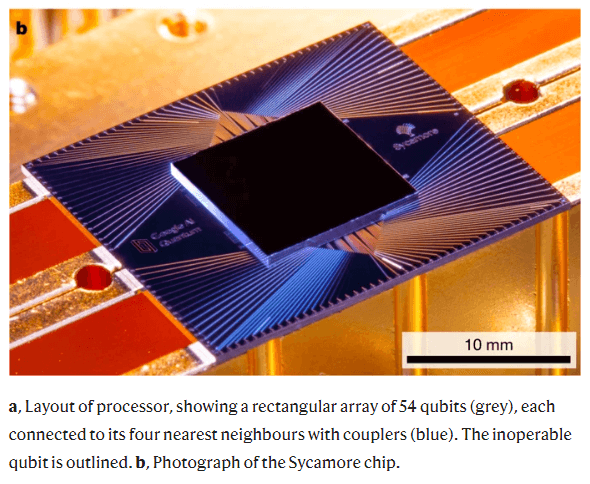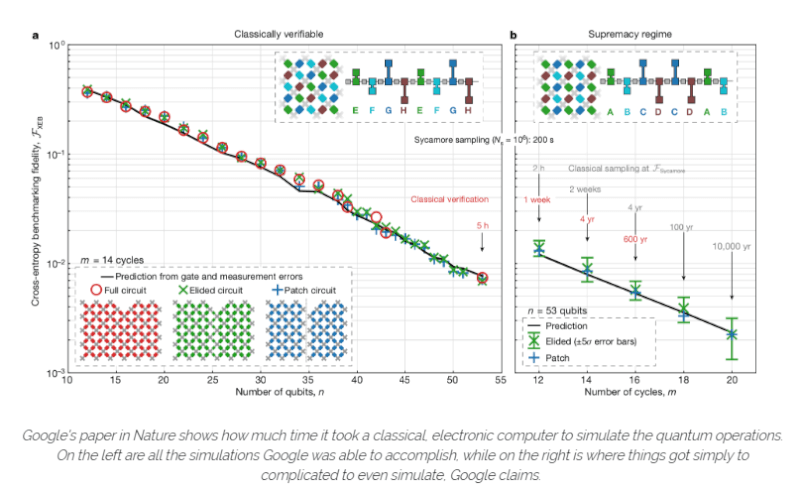Featured
Google’s Quantum Supremacy: An Easy To Understand Explanation For Enthusiasts
Published
6 years agoon
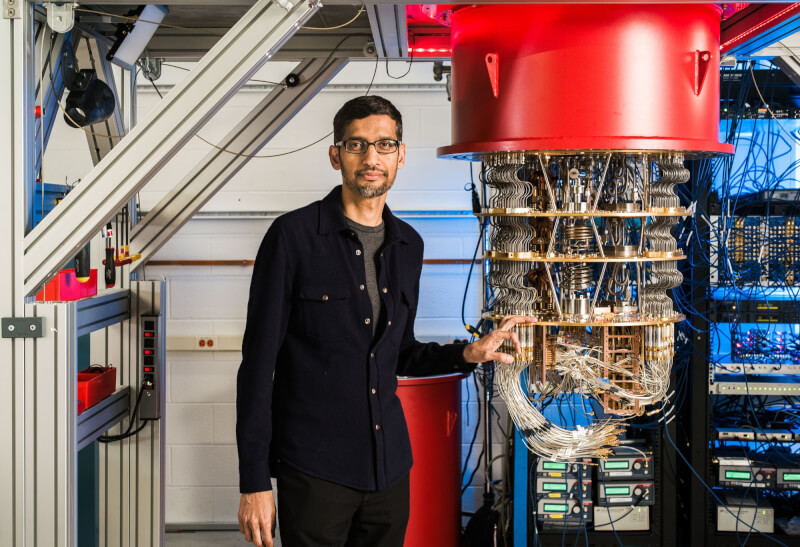
If you’re a tech enthusiast and not living under a rock since the last week, you’ve heard about Google’s Quantum Supremacy. Now, to whatever word we add “Quantum” as a prefix, it’s going to be complicated. Really, really complicated! Whatever Google has achieved, is phenomenal, and people need to know that. The official YouTube channel of Google posted a video explaining this and Google CEO Mr. Sundar Pichai wrote it in his blog. Still, this is such a complex topic to understand for any layman. What I’ll do is to try accommodating many debatable blogs and articles and try to explain Google’s Quantum Supremacy to someone without any prior knowledge! I’ll be giving equivalent real-life examples for better understanding.
Disclaimer: The author is not a Quantum Electronics Engineer. This article is for familiarization.
The basic difference between Classical and Quantum Computation:
As correctly quoted by Marissa Giustina, Senior Research Scientist Quantum Electronics Engineer, Google, whenever we hear the term “computer”, we think of a Desktop-PC, Laptop or a Mac, sometimes, smartphones. Contrary to what our beliefs might be, they all work at similar fundamental principles. Even the most powerful supercomputers, end up at BINARY. Everything, this word, this article, this internet, the device you’re reading on, ends at either 0 or 1. This is where Quantum Computers take U-turn from.
“If you think you understand quantum mechanics, you don’t understand quantum mechanics.” ~Nobel Laureate Richard Feynman
A zero(0) or one(1) is called a bit. Whereas, in a quantum computer, we have qubits. A qubit is a bit, which is both zero(0) and one(1) at any point in time. Think of tossing a coin. You tossed the coin and called for heads. When can you actually see if it is indeed heads or not? When the coin falls on the ground or you catch it, i.e., when it stops moving. By the time it’s in air, the coin at any moment of time is both heads and tails. That is a qubit, both 0 and 1, the whole time. This phenomenon is called Superposition, which you can read in more detail here.
Why do we need a qubit?
Now comes the question, why are we even discussing qubits. Why isn’t a fixed bit sufficient? According to Mr. Sundar Pichai, “While the universe operates fundamentally at a quantum level, human beings don’t experience it that way. In fact, many principles of quantum mechanics directly contradict our surface-level observations about nature. Yet the properties of quantum mechanics hold enormous potential for computing.” Oh, and by the way, the naming convention of qubit comes from Quantum Bit, it’s not some marketing gimmicky term.
How does a qubit work?
1 qubit is either 0 or 1. Similarly, 2 qubits have 4 possibilities- 00,01,10,11. 3 qubits have 8-000,001,010,011,100,101,110,111. If you’ve read binary computation in schools, you might be able to relate. The difference is, when there are 3 binary bits and they’re supposed 010, they will remain 010 forever until changed. Unlike qubits, where the 3 qubits will have any of the 8 states at any time.
If we put it in an equation, it’ll be 2^n(n=number of qubits). Now please don’t leave seeing the word “equation”, I too fear it, but you won’t need higher mathematics to understand whatever is in this article. Back to the topic, qubits grow exponentially. Again quoting Mr. Sundar Pichai, “With 333 qubits there are 2^333, or 1.7×10^100—a Googol—computational states you can put in superposition, allowing a quantum computer to simultaneously explore a rich space of many possible solutions to a problem.”
What is Google’s Quantum Supremacy?
Now, this is the primary question here. As of now, most of the things about quantum computing are theories and haven’t been feasible practically till date. That’s where the question was raised, all the fancy theories aside, is even Quantum Computing possible? What good are theories if we can’t use them in real life? To answer this, Google’s Quantum Researchers had to show that yes, quantum computing is possible. That is where the term “SUPREMACY” originates. Google proved that Quantum Computers are superior to classical computers. If you know somewhat of coding, it’s the “HELLO WORLD” step in the quantum computing world. Or you can think of it as drawing a circle or rectangle when you joined drawing classes. Drawing a circle is insignificant to the naked eye, but you can’t skip that and wish to draw a human figure!
How Google Achieved Quantum Supremacy?
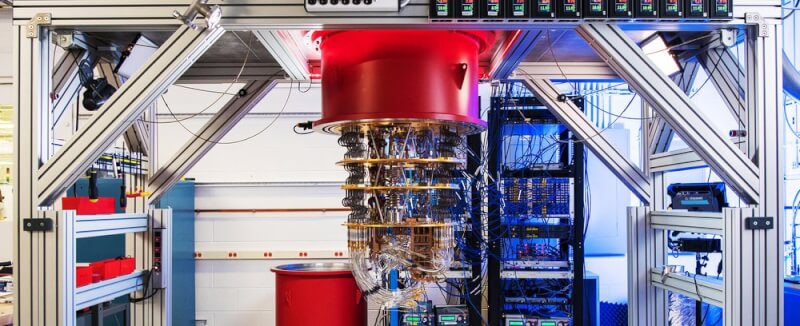
Source: Google Blog
I will transcript the video posted by Google about how they achieved it. According to that, they had 3 steps.
- Design a circuit
- Test it on a quantum machine.
- Simulate on a classical computer whatever the quantum machine is doing.
These steps are repeated over and over again. At some point, the classical computer fails to keep up with the quantum machine. Then they claim, Google’s Quantum Supremacy has been finally achieved!
The experiment to achieve Google’s Quantum Supremacy:
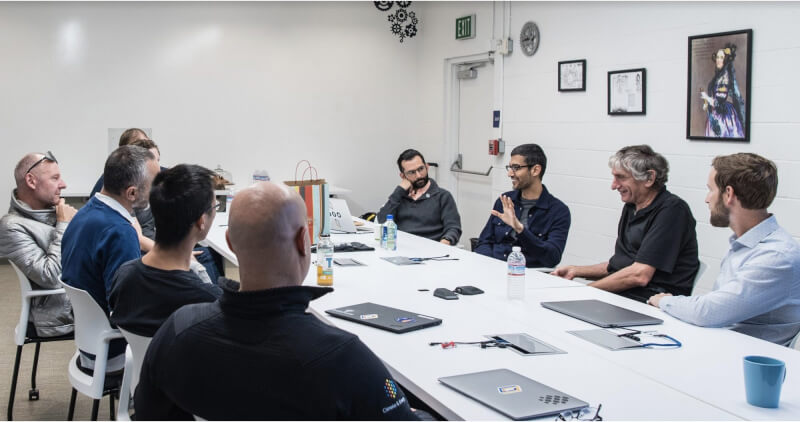
Source: Google Blog
The researchers simulated a random number generator and prediction algorithm. According to their tests and claims, the “Quantum Processor” did the job in 200 seconds, i.e. 3minutes and 20seconds. To compare with classical computers, it would take the most advanced supercomputer to do it 10,000 years. Yes, not seconds, not minutes, not days, YEARS! But, quantum computers are prone to errors, yet Google’s experiment showed the ability to perform a computation with few enough errors at a large enough scale to outperform a classical computer.
After a certain amount of complexity, the difference between the classical and quantum computers was not increasing exponentially and the team thought they failed. Later, they realized that it was all experimental data. There’s no known finite solution to compare with and whatever they wanted to achieve, they did so! Google’s Quantum Supremacy was achieved finally!
Results after Google’s Quantum Supremacy- Sycamore:
In their experiment, Google used 54 qubits. One of which, was not functioning. With 53 qubits, there are 2^53 possible parallel computations possible. That is, in easier terms, 10 million billion parallel processes running together to achieve a single goal!
This processor is named the Sycamore which is capable of doing such computations. Sycamore is like the Android developed by Google, now it’s up to the developers and other researchers to make use of it and design practical applications like developers develop apps!
Why is it so hard to design a Quantum Computer than any other tech?
First of all, uncertainty. Qubits change and predicting changes are tough. And when you’re working with millions of it, it’s really tough. This is best described by Mr. Sundar Pichai’s words himself, “The thing about building something that hasn’t been proven yet is that there is no playbook. If the team needed a part, they had to invent it and build it themselves. And if it didn’t work—and often, it didn’t—they had to redesign and build it again. “.
We’ve always known that it would be a marathon, not a sprint. ~Sundar Pichai, CEO, Google
It’s been a 13-year journey to achieve Google’s Quantum Supremacy. In 2006, Google scientist Hartmut Neven started the idea of Quantum Computing and how it can change the world we live in. In 2014, John Martinis and his team at the University of California at Santa Barbara joined Google to build a quantum computer. After two years, Sergio Boixo published a paper on the well-defined computational task of quantum supremacy, and now the team has built the world’s first quantum system that exceeds the capabilities of supercomputers for this particular computation.
Applications of Quantum Computers:

Source: Google Blog
Quantum computing can accelerate any innovation or discovery by thousands of years. At the molecular level, nature behaves in a quantum manner and thus quantum computing is the closest to what we can get to. Quantum computing will bridge the gap between nature and the digital world- a heavy statement rather said than done!
Some direct applications might be,
- Design efficient batteries
- Create fertilizer using less energy
- Figure out what molecules behave with others in terms of medicine and human health
Not to mention, these discoveries are still years to achieve. Sycamore is the 1st step of building such a processor. One way I can think of it is if the quantum computers can actually accelerate innovations years ahead and can help us to run millions on parallel possible processes simultaneously, can it recursively help build itself faster?
What if Quantum Computers can themselves generate a better version of themselves?
IBM questions Google’s Quantum Supremacy- is it achieved?
IBM stated that Google took only into consideration the capabilities of Dynamic RAMs, but left out the memory management. According to IBM, the problem of random number generator can be broken into sub-problems and can be solved and continuously saved in storage. Instead of putting all the pressure to the DRAM, we can only access previously calculated data when it is needed from the storage. This is kind of a “paging-technique” or “data caching”. If you’re one of a computer science student, this phenomenon is called “Dynamic Programming”.
IBM’s proof against Google’s Quantum Supremacy:
IBM is arguing that the architecture, the way a computer’s resources such as chips and memory and storage are combined, can be done more intelligently to get around bottlenecks – in this case, a lack of sufficient DRAM in each compute node with which to work on the intermediate products of matrix math.
IBM has a whole laundry list of techniques, both architectural and algorithmic. Their estimation is, classical supercomputers can do the job which Google estimated in 10,000years, in just 2.5days. Although 200 seconds is a lot lesser than 2.5days, the threshold to claim Quantum Supremacy isn’t crossed if the ratio of 200seconds:10,000years falls to 200seconds:2.5days!
Why IBM might not be correct and Google’s Quantum Supremacy is a real thing:
IBM didn’t run any actual simulations. Instead, the company came up with a model on paper, a theoretical estimate for how long it would take to simulate Sycamore on the Summit supercomputer at Oak Ridge National Laboratories. In other words, IBM has put together a thought experiment.
“Fancy engineering doesn’t resolve the matter of quantum over classical.” ~UT Austin scientist Scott Aaronson, outside reviewer of Google’s paper.
According to Aaronson, you can go to great lengths to make a classical computer better, as IBM does, but that won’t necessarily erase the essential difference between that classical machine and a superior system. If you’re into the advanced stuff, you can check his Opinion article in the New York Times.
According to ZDNET, “IBM’s argument for better architecture, as smart as it is, seems a little like how some people in the Middle Ages tried to maintain the myth of the sun circling the Earth. They kept adding ellipses to their models of the solar system to make the math match what they observed in the night sky.”
Future of Quantum Computing:
Google published the research paper in Nature.com, and you can obviously go check it out here. The future of Quantum Computing is well described in this paper. To make long things short, I’ll quote out the important portions pertaining to the future of Quantum Computers as Google thinks.
“Quantum processors based on superconducting qubits can now perform computations in a dimension of 253 ≈ 9 × 1015, beyond the reach of the fastest classical supercomputers available today. To our knowledge, this experiment marks the first computation that can be performed only on a quantum processor. Quantum processors have thus reached the regime of quantum supremacy.”
“We have performed random quantum circuit sampling in polynomial time using a physically realizable quantum processor (with sufficiently low error rates), yet no efficient method is known to exist for classical computing machinery. ”
“We are only one creative algorithm away from valuable near-term applications.” ~ Nature.com paper published by 77 Google authors.
CIRQ- Quantum Computing Framework by Google:
Google says it will continue to publish research and help the broader community develop quantum encryption algorithms using their open-source framework Cirq.
What is Cirq?
Once installed, Cirq enables researchers to write quantum algorithms for specific quantum processors. Cirq gives users fine-tuned control over quantum circuits, specifying gate behavior using native gates, placing these gates appropriately on the device, and scheduling the timing of these gates within the constraints of the quantum hardware. Data structures are optimized for writing and compiling these quantum circuits to allow users to get the most out of NISQ architectures. Cirq supports running these algorithms locally on a simulator and is designed to easily integrate with future quantum hardware or larger simulators via the cloud.
You can read the Cirq documentation by Google here if you’re into the stuff.
Risks of Artificial Intelligence:
Now the human rights question arises, what if someone uses the Quantum Computing to create a nuclear weapon in minutes which could have taken years, or in the best case, wasn’t even possible? To tackle these adverse situations, Google had to come up with something. Obviously, history witnessed tons and tons of misuse of scientific experiments in the past and thus strict regulations are required. As Mr. Sundar Pichai recites in another blog, they’ve certain principles.
- Be socially beneficial.
- Avoid creating or reinforcing unfair bias.
- Be built and tested for safety.
- Be accountable to people.
- Incorporate privacy design principles.
- Uphold high standards of scientific excellence.
- Be made available for uses that accord with these principles.
You can read the details of Google’s AI principles here and also the regulations on top of these basic norms.
Optimistic ending:
Controversies aside, Google CEO Mr. Sundar Pichai is very optimistic about the future of Quantum Computing. He quotes in his blog, “Quantum computing will be a great complement to the work on classical computers. In many ways quantum brings computing full circle, giving us another way to speak the language of the universe and understand the world and humanity not just in 1s and 0s but in all of its states: beautiful, complex, and with limitless possibility.”
Follow TechBurner Team on social media handles to get the latest updates:
Download REWALLS: TECHBURNER WALLPAPER APP For Awesome Wallpapers.

